Chronic Veinous Disease
Venous disease can be serious, chronic, progressive.
>40 years old
is the most common age
for symptoms apparition1
24%
of Taiwanese will experience
varicose veins2
32%
will experience from mild
to severe grade progression
in only 6 years3
Heavy, painful legs

Legs that feel heavy, painful and swollen can be a result of a build up of fluid in the legs due to the blood not circulating as well as it should. This increased fluid leads to the symptoms of Chronic Venous Insufficiency (CVI), a condition affecting leg vein health that worsens over time.4
What is poor blood circulation ?
Healthy veins
Healthy veins
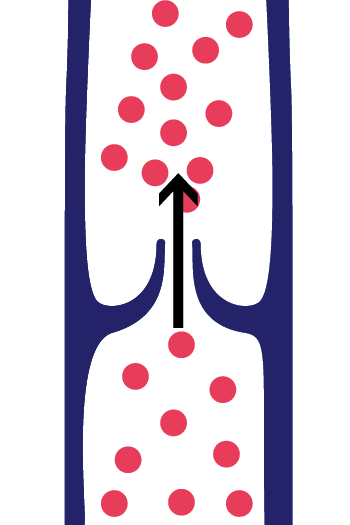
Healthy veins have small valves which prevent blood flowing backwards.
Unhealthy veins
Unhealthy veins

When the internal walls of the veins are damaged, and these valves don’t work as they should, blood can flow back into the veins, resulting in pooling in the lower leg and leading to uncomfortable symptoms that can worsen over time.
Symptoms of poor blood circulation
A range of signs and symptoms can point to poor blood flow in the legs. If you’ve been experiencing any of the following symptoms in your legs or ankles you should seek treatment as they can worsen over time.4,5
- Heavy, painful or swollen Legs
- Tired Legs
- Cramping or Leg pain
- Spider or Varicose veins
Treat your symptoms early
Heavy, painful legs and swelling can be early symptoms of chronic venous insufficiency. Left untreated, these symptoms can increase in severity, leading to spider veins, varicose veins, and leg ulcers. The different stages of chronic venous disease are described as grades C0s*-C6 depending on the severity of the symptoms as shown here 4 :
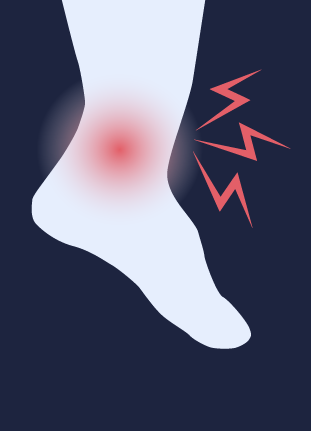
Stage 0 : Heavy, Painful Legs
The first stage, with no visible signs of venous disease. However, damage may already be starting to accumulate inside the vein. This leads to venous reflux and is why you should start treating, even if your only symptoms are heavy and painful legs.
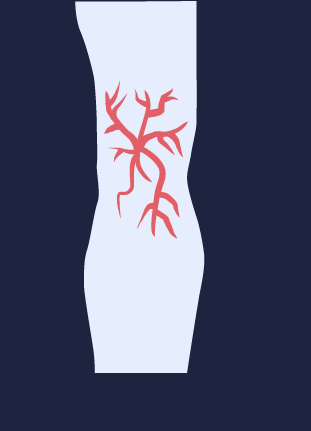
Stage 1 : Spider/Reticular Veins“
Ignoring initial symptoms can cause the condition to worsen, leading to broken blood vessels or “spider veins” and visible veins. They aren’t usually painful but are an important indicator of leg vein problems. It’s important not to ignore this early sign as the condition can rapidly progress.
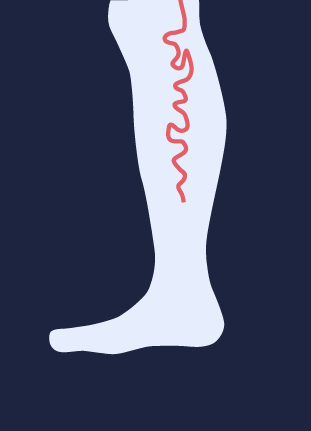
Stage 2 : Visible varicose veins
Left untreated, stage 1 turns to stage 2 with the veins becoming unusually dilated, stretched out and sinuous. These obvious, bulging veins on the legs and ankles are a clear sign of chronic venous insufficiency
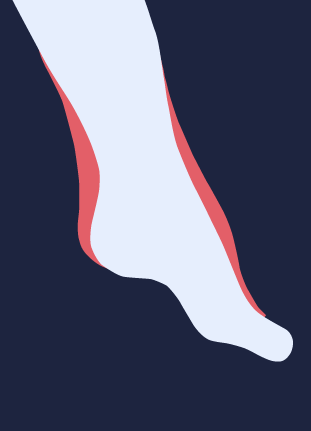
Stage 3 : Swelling of the ankle and leg
Edema (swelling) may appear in stage 3 caused by increased pressure and leakage as a result of further deterioration of the venous walls and valves.
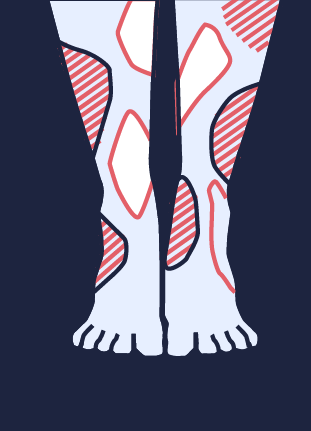
Stage 4 : Skin change
Continued poor circulation can lead to stage 4, characterized by darkening of the skin around your ankles (hyperpigmentation), redness, dryness, itchiness (venous eczema), hardening of soft tissues and the development of whitish patches.
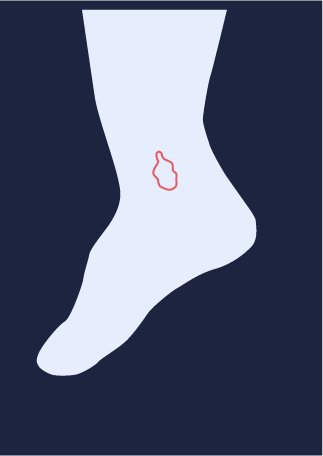
Stage 5 : Healed ulcers
Stage 5 is defined by the presence of open but healed areas of skin called ulcers. These can be painful and affect your quality of life
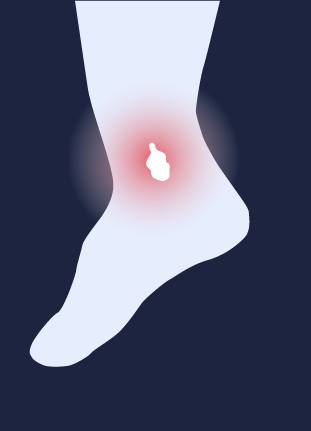
Stage 6 : Active ulcers
If you reach stage 6, you will have open wounds called ulcers on your legs. Internally at this stage there is more deterioration in circulation and increased leakage in the capillaries.
Important : Only a doctor can advise you regarding your diagnosis and treatment.
By recognizing the symptoms and taking action, you can significantly reduce the likelihood of your condition progressing and lessen the impact on your day-to-day life.
Factors affecting blood circulation
There are several key risk factors for Chronic Venous Insufficiency (CVI), some of which may be beyond your control, but others you can take steps to modify5
Women are typically more at risk, and a family history, as well as simply growing older can increase your chances of developing symptoms.4
- Age
- Gender
- Heredity
- Pregnancy
- Height
- unbalanced diet
Lifestyle factors you can take steps to negate, such as being overweight and inactive, can also increase your risk of developing problems with your veins. Those who stand or sit as part of their occupations, such as nurses, teachers and those in the service industry, are particularly at risk.
Relieve my painful legs
A 3-tips guide
Consult your doctor
Ask your doctor questions to recognize typical Chronic Venous Disease symptoms
Practice these advised lifestyle modifications
By incorporating simple habits into your daily routine and maintaining a healthy lifestyle, you can help protect your legs from the discomfort caused by increased fluid in your legs and the damage this can cause to veins over time:6
- Avoid excessive weight gain
- Avoid sitting or standing for long periods
- Avoid exposure to heat
- Practice a physical activity
- Elevate your legs
- Massage feet & rinse with cold water
- Wear loose clothes & low-heel shoes
Speak about your disease and find your optimal treatment
- Compression stockings
- Topicals
- Venoactive drugs
- Non-surgical interventions
- Surgical procedures
Important : Only a doctor can advise you regarding your diagnosis and treatment.
References
- https://health.tvbs.com.tw/strong/344704
- https://journals.sagepub.com/doi/10.1177/20503121221118992
- https://www.ncbi.nlm.nih.gov/pmc/articles/PMC6824337/
- Nicolaides A et al. Int Angiol. 2018;37(3):181-254.
- Bergan JJ et al. N Engl J Med. 2006;355:488-498.
- Ortega MA, Fraile-Martínez O, García-Montero C, et al. J Clin Med. 2021 22;10(15):3239